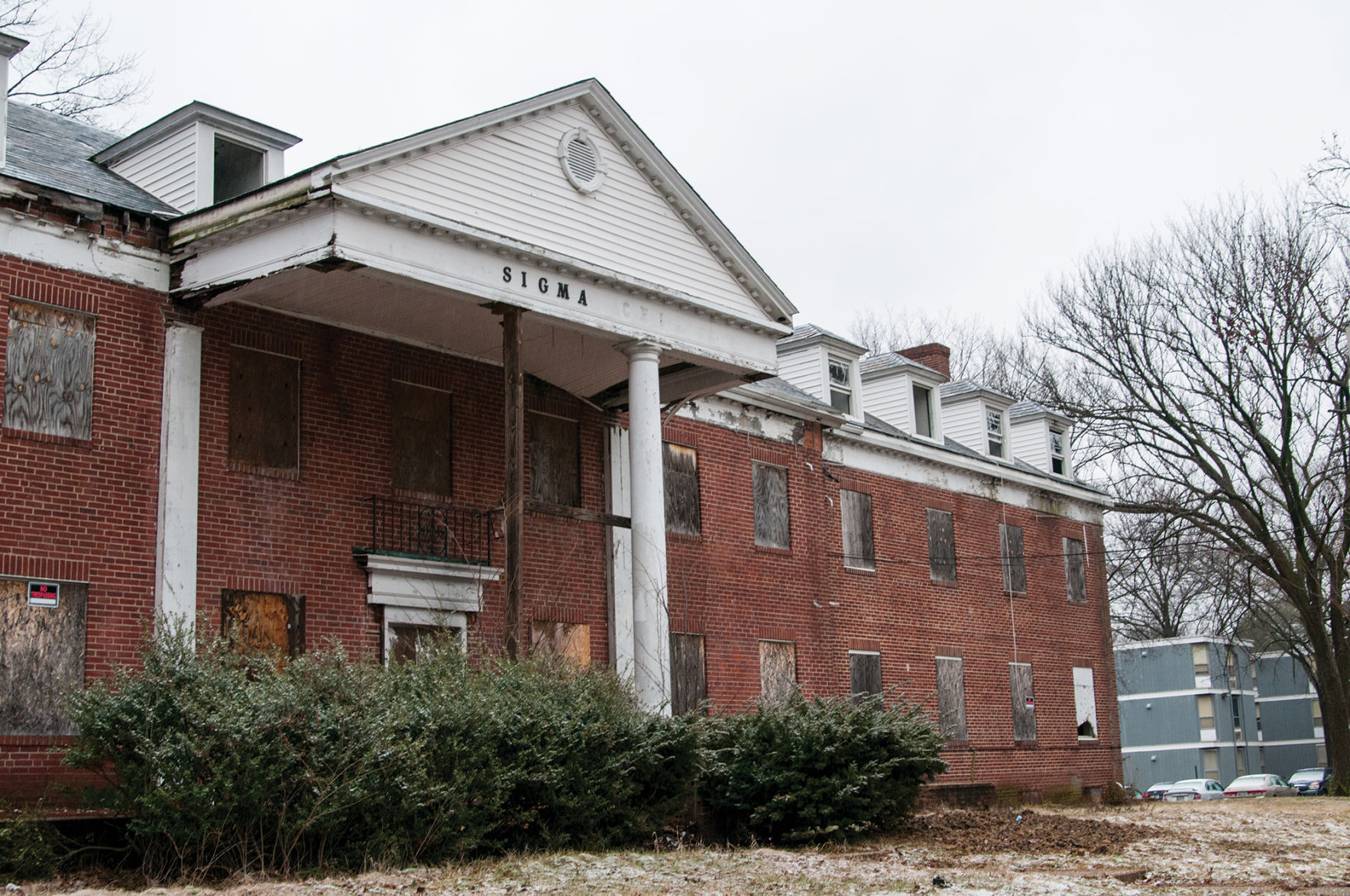
Burned and boarded up for more than a decade, the abandoned Sigma Chi house is slated for demolition within the next month.
Owner Barry DesRoches, president of Sigma Chi’s Gamma Chi Chapter Inc. filed his request last year to bulldoze the dilapidated building located at 4600 Norwich Rd. behind Fraternity Row.
After the Prince George’s County Historic Preservation Commission’s approval on Dec. 16 was a 30-day appeal period, which provided a window for the community to protest the plans formally.
That window closed this week without objection.
“[The appeals period] is pretty perfunctory, but the law requires it,” DesRoches said. “If everything starts as scheduled, the building should be demolished by February.”
The decision to demolish the house came when plans finalized to sell the property to the university’s College Park Foundation, which stipulated the building be destroyed as a condition of the purchase. Though renovation was considered as an alternative, the desire to be cost-effective eliminated that option after the project was valued at more than $3 million.
“In 1990, we raised some money to do a major renovation and engaged a good architect to review it for us, but even at that time the building was about 50 years old,” DesRoches said. “It was determined that because of the way it was built, it was more cost-effective to rebuild than renovate.”
While Philip R. Lamb & Co. Inc. appraised the site at about $1.5 million, The Diamondback reported Dec. 11 the foundation said it plans to pay less for it. The 35,000 square feet is a logical purchase for the group as the university borders the property on three sides, DesRoches said.
The house was built in the early 1940s and was occupied by students until 13 years ago. Its location in the College Park Old Town Historic District has merited its designation as a historical building, which is why the county’s Historic Preservation Commission had to approve the demolition project.
“We approved the proposal with some conditions — the applicants have to provide some kind of documentation of the structure [for historic records], and they have to provide for the installation of commemorative signage at some point in the future,” said Howard Berger, historic preservation supervisor for the Prince George’s County Planning Department.
Despite the building’s historical value, the structure fell into a state of disrepair throughout the past decade and a half, according to DesRoches. Since the expiration of its university charter in 2001, the house served as a magnet for homeless people seeking shelter in cold months.
“We’ve had problems with homeless people [living in the house], so we boarded it up real tight,” DesRoches said. “I think we upset somebody because someone lit a fire in it, and now there’s substantial damage.”
A blackened and broken building resulted from the fire, along with a facade marred by smashed windows and overgrown weeds. District 3 Councilman Robert Day labeled the house a “blight” as its state of disrepair and prominent location paint a bad picture of the community.
“The building is a danger and a hazard,” Day said. “There were people who used to go in there and sleep, and that’s not a good situation for anybody. People were lighting tires in there to keep warm, so it’s not a good environment for anyone to be around.”
Though DesRoches attempted to demolish the building in 2007 and was denied, the approval came as the property was in a greater state of disrepair and faced a more defined future with a goal in mind, Day said.
Day also said the city would like to see senior housing, a community garden or a space that start-ups can be established, although nothing is set in stone.
“It’s a better plan to think about developing something that will fit the neighborhood, benefit the neighborhood,” Day said. “There’s a great opportunity here through collaboration between the university and the city to do something great there.”
Assistant Vice President for Facilities Management Carlo Colella, however, said he feels it’s more likely for the foundation to build student housing instead.
“We’re studying different options, but an obvious candidate for consideration is housing for faculty and staff, grad students, something of that nature,” Colella said. “Something of that nature you can imagine very easily being supported by the university and the community, and its character and scale would exist comfortably in the historic district.”
No matter what the property’s future might hold, Colella said it will be an improvement from the building’s previous condition.
The Foundation’s intention to work closely with the city government and the local community reflects of a larger trend toward large-scale cooperation between the entities, such as in projects like The Hotel at the University of Maryland, Colella said.
“I’m really pleased the city and community were supportive of this transaction,” he said. “It’s a testament to the collaboration that continues to grow between the university, the Foundation, the city and the community.”



